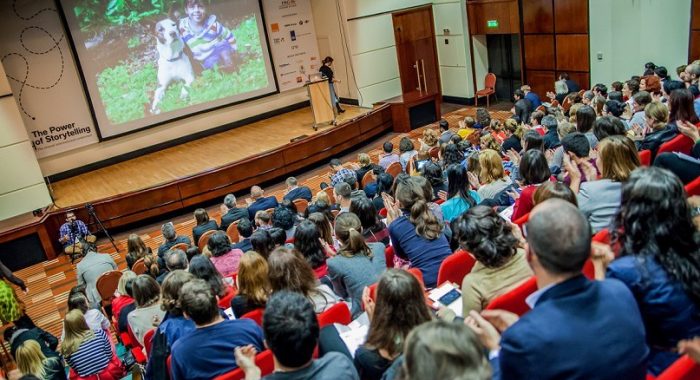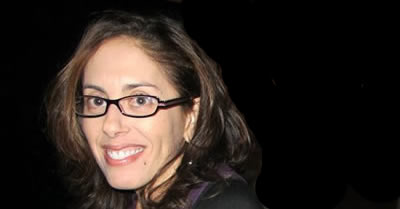Last week, the Initiative for Narrative Journalism in the Netherlands hosted its fifth annual conference, with the theme ”The Protagonist”. We attended, listened and learned from great journalists and storytellers such as Maisie Crow, Josh Neufeld, George Packer and Lisa Pollak, as they shared insights into their work and process.
Here are some of the things we learned during two days of keynotes, sessions and masterclasses.
1. On building relationships with the characters in your stories:
The key to any good story is a good relationship, and all good relationships are built on a solid foundation of trust.
Documentary photographer and filmmaker Maisie Crow opened the conference by talking about the longlasting relationship she built with Tom Rose, the main character in the multimedia project A Life Alone.
Tom’s and mine relationship is built on the shared sense of loneliness, our common vulnerabilty. I was alone in a new place, and he was mourining the loss of his wife.
Maisie Crow gives insight about being vulnarable as a journalist #alifealone #Wareverhalen2015
— Wendelmoet Boersema (@WendelmoetL) April 16, 2015
2. On immersion:
If you don’t go out there, you can’t really know what the story is.
Maisie Crow also described the process behind The Last Clinic, a documentary in collaboration with The Atavist that she’s now turning into a feature film.
If I was going to do justice to the story, I had to fully immerse myself in Mississippi and understand what the place was. I spent nearly everyday at the clinic and I even lived at the clinic nurses’ house. It’s interesting how, after a certain amount of time, people start to become family and you care about them. But they meet me as a documentaritst and they know I’m in their lives to tell a story, despite our friendship.
Maisie Crow on friendship and craft. Sometimes craft must win, telling the story is also a form of friendship. #Wareverhalen2015 — Alba León (@albaleon_) April 16, 2015
3. On comics journalism:
Comic journalism means telling real stories about real people in a comic form. Comics don’t necessary have to be funny; they can hold any kind of story, as they are a medium, not necessary a message.
Josh Neufeld, a nonfiction storyteller who uses comics as a medium, offered insight into what comic journalism means and how he constructed projects such as his graphic the novel on the aftermath of hurricane Katrina or the collaboration with Al Jazeera on Big Data.
What drives me to this form of narrative journalism and comic form is that I think there’s an oportunity to comics to really bring the characters’ experiences to life, to bring the reader into the subject’s minds and experiences. Comics offer the reader a unique experience, engaging him in an active role of interpretation.
Comics journalism is slow journalism: good way to counter hypes and misinformation in newscoverage @joshneufeld #Wareverhalen2015
— Wendelmoet Boersema (@WendelmoetL) April 16, 2015
4. On tackling big projects through small stories:
The best way to approach a bigger theme is through small stories; you can’t take it on as a whole, you have to find a narrow path into big gray areas.
When George Packer, a staff writer for the New Yorker, started thinking about writing The Unwinding, he envisioned an account of America’s recent history. (“We were a nation in crisis, it felt as if all our institutions were collapsing around us, that’s the kind of moment that makes me think of a book.”)
Looking at it from a hystorical perspective that would answer the question of “how did it happen?”, he found himself rejecting every idea for being too long, too boring or too conventional. So he searched for other ways to tell it, and the one that kept coming back was to write it “like a novel, but with real characters”.
I wanted to tell the story of 35 years of American history and try to find certain people who could shoulder the history themselves. That was liberating for me. If I told their stories, they would carry the weight of the story.
To find those characters, he looked in different parts of the country, different walks of life, different social and economic backgrounds. But still, he found them mostly by happenstance – “not just luck, because I had an idea of what I was looking for.”
If I’d set out deliberately to look for people, it would never have worked, it had to be something more like an instinct that happens when you meet someone. I used my day job as a staff writer to travel and so I met the characters I wrote about. And history became the flow that units the book.
Luck, interest in people and devoting a lot of time, George Packer van @NewYorker on finding his main protagonists #Wareverhalen2015
— Wendelmoet Boersema (@WendelmoetL) April 16, 2015
Our characters are human beings, with their own expectations and emotions, says George Packer at #Wareverhalen2015 — Wendelmoet Boersema (@WendelmoetL) April 16, 2015
5. On finding the right characters:
Casting people for stories can be operating like a true detective. In that search, skip the biographical questions, and ask questions like: “What worries you the most?”, instead.
Pulitzer Prize winner Lisa Pollak analyzed the process behind the John Smith episode of This American Life and talked about how she found the main characters in it.
In search for your dreamed character: the best that can happen is finding another person better than your ever imagined #Wareverhalen2015
— Wendelmoet Boersema (@WendelmoetL) April 16, 2015
To structure a narrative: look for turning points, failures, success and conflicts in somebody’s life, says @lkpollak #Wareverhalen2015 — Wendelmoet Boersema (@WendelmoetL) April 16, 2015
Lisa Pollak also attended The Power of Storytelling Conference in Bucharest last October. Here is a discussion we had with her on what makes a good story:
*Photo by the Initiative for Narrative Journalism in the Netherlands.

